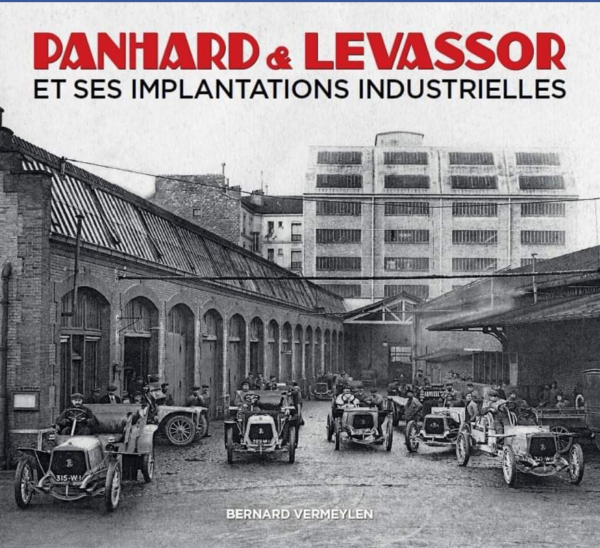
By Bernard Vermeylen
2022 review by James Loveridge
This extremely well produced and lavishly illustrated paperback by author Bernard Vermeylen is interesting in two respects. Firstly it is a pretty comprehensive record of this famous maker from its start in 1845 when a Jean-Louis Perin started making woodworking machinery through to Citroën administering the “coup de grace” in 1967.
Secondly it was privately produced by Les Doyennes de Panhard & Levassor and Amicale Panhard de Belgique and not by a commercial publisher, but it is available from Librairie Thé à la page, Montelimar, France for £25.89. Amazon don’t seem to have it yet. The author, who has included an English translation, has written several books in French and other makes so is probably familiar to Francophile readers.
Mr Vermeylen has thoroughly researched a marvellous archive of this motoring pioneer. It is not a company history in that sense but we do get a very good idea of how the company grew, where they established their business and, most relevant, how they made their vehicles. From the numerous clear photographs we can see how vehicle manufacturers, not just Panhard, went from hand-built to assembly-line processes. Also shown is how the company went from the world’s largest car manufacturer in the early 20th century to the producer of charmingly idiosyncratic cars by the time of its disappearance, along with brief mentions of its ventures into commercial and military vehicles.
One of the problems confronting the company was the lack of space in its original Paris factory, so they acquired other sites in Reims and Orleans; parts then had to be shipped around between them. There are fascinating pictures of how they transported car bodies, twelve at a time, by lorry.
The pictures for the early years show in some detail the various processes. Panhard made nearly everything themselves, including engines, only bodywork being done by others. When they moved to assembly-line production they really had a big issue to confront and there are four pages, 114 to 117, showing the tortuous route Dyna 54 bodies had to travel before the car was complete.
Many of the early models as well as those post-WW2 are illustrated, including the 1925 record breaker, the rather sexy Dynamic and then the racing cars for Le Mans and elsewhere.
There is coverage of the company’s work in WW1, from having to vacate the Reims factory because it was too near the Front Line to forming a consortium with other French manufacturers to make artillery shells. During WW2 they had to work for the Germans but it seems a lot of effort went into collaborating with the Resistance and doing as little to help as they could get away with and probably the odd bit of sabotage.
One of the nice things about this company is that it was very much a family company for most of its time. Levassor died in 1897 but right up to the approach to Citroën in 1955 for financial assistance to avoid bankruptcy a member of the family, Jean Panhard, was involved. The company’s dismemberment by Citroën, Renault and Volvo amongst others makes depressing reading.
Like most of French industry Panhard suffered from industrial unrest, their first being as early as 1903, and there were other instances in the 1930s. Fortunately, unlike Bugatti, the owners didn’t wash their hands of the car business when the workers showed their ingratitude.
Altogether this 147-page book is an informative and easy-to-read addition to the history of this very significant company.
Price: £25.89 plus approx £3.00 postage – available from Librairie Thé à la page, Montelimar, France https://www.thealapage.com/
Description: softback, 147 pages with black & white photos.
ISBN: None known







I have this book and it is excellent. It’s a little sad at the end. One can see what remains of the last site in Paris using google maps street view. They gave a couple of Panhard cars in the foyer! Good review. Thank you.